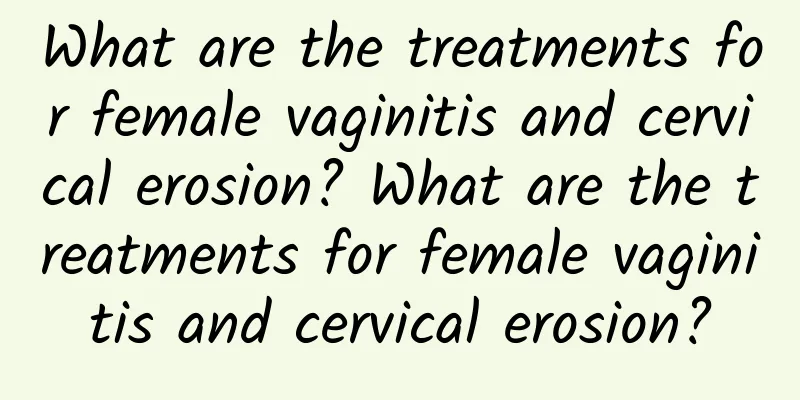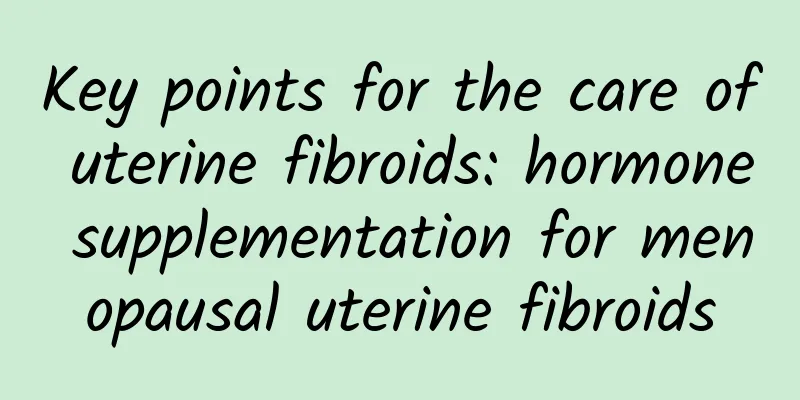Several common drug treatments for menopause

|
When women are over 45 years old, they will experience significant changes in menstruation. Many women will experience menopause, which seriously affects their physical health. Usually, we should pay attention to the occurrence of this disease and treat it reasonably. We can choose some drug treatments to avoid uterine fibroids and reproductive system infections. So, what are the common drug treatments for menopause? Several common medications for menopause are listed below. 1. In principle, HRT (hormone replacement therapy) should be aimed at maintaining the health of the body. For example, long-term medication is required to prevent postmenopausal degenerative diseases. (1) Etiological treatment: During the reproductive period, the cyclical changes in the estrogen and progesterone in the blood of women participate in coordinating the physiological activities of the body, becoming an important factor in stabilizing the internal environment of the female body and maintaining health. After menopause, the continuous decline of estrogen and progesterone causes women's physical and mental dysfunction, and the body produces a series of degenerative lesions, resulting in poor physical health of some women. Etiological treatment is given to these health problems caused by estrogen deficiency. (2) Physiological supplementation: The purpose is to enable the organs of postmenopausal women to function physiologically as much as possible to maintain the health of the body, not to restore their endocrine conditions to the level of the ovarian cycle during the reproductive period, which is physiological supplementation. Physiological supplementation mostly advocates the use of natural estrogens, that is, the chemical structures of estrone, estradiol and estriol. The dosage is controlled at a blood E2 concentration of about 220pmol/L, or within the equivalent estrogen activity range, and should not exceed 550pmol/L. Exceeding this level may lead to an increase in side effects. Since the estrogen and progesterone in contraceptives are in large doses, highly active, and have a non-physiological chemical structure, they are not suitable for physiological supplementation in HRT. (3) During the menopausal transition period, HRT should focus on supplementing progesterone: During the menopausal transition period, the growth and development disorders of follicles gradually increase, and finally the functional follicles disappear from the ovaries. The corresponding changes in estrogen and progesterone during this period are: first, there is a relative lack of progesterone, and then there is a lack of it; the lack of estrogen changes cyclically, although there may be a transient relative excess, the total amount gradually decreases, and finally to lack, forming a relatively excessive or single unopposed estrogen stimulation for a long time. Some women may experience varying degrees of proliferative changes in the endometrium, and even malignant changes. Therefore, during this period, the main focus should be on cyclical supplementation of progesterone to adjust the menstrual cycle and prevent endometrial proliferative lesions. As estrogen gradually becomes deficient, estrogen can be supplemented at the same time. (4) HRT in the late menopause should be mainly based on estrogen supplementation: Early postmenopause ovarian follicle activity basically stops. The blood estradiol concentration drops from about 150-1500pmol/L in the reproductive period to below 80pmol/L within 1-2 years, which is lower than the basic level for maintaining the physiological functions of the body's organs. Endometrial atrophy is completed within 2-3 years after menopause, and the rate of bone loss is fastest within 1-3 years after menopause. Corresponding degenerative changes occur in various organs throughout the body. Therefore, to prevent postmenopausal degenerative lesions, timely and long-term estrogen supplementation should be used. In order to counteract the side effects of estrogen on endometrial hyperplasia, those with a uterus need to add progesterone. Warm reminder, many women will have menstrual disorders, and it will also cause less and less hormones, leading to athletics, sweating, headaches, and panic. In addition, it will also cause back pain and cervical spondylosis. In daily life, everyone must pay attention to the treatment of this disease and make a reasonable diagnosis to avoid causing more harm. |
<<: Analysis of treatment methods for vulvar menopause
>>: Western medicine treatment for menopause
Recommend
How long does it take to expel the gestational sac after medical abortion? What should you pay attention to after expelling the gestational sac?
Generally speaking, if a woman expels the gestati...
Will ectopic pregnancy cause fever? Generally, it will not exceed 38°C
Ectopic pregnancy refers to the fertilized egg be...
How to treat premature ovarian failure
How to treat premature ovarian failure? Premature...
What are the sequelae of microwave treatment for female cervical erosion? Three points to note when microwave treatment for female cervical erosion
Most women have some gynecological diseases, amon...
How should women prevent irregular menstruation?
Irregular menstruation is one of the most common ...
How to treat habitual miscarriage? Do these 4 things
Habitual miscarriage is a problem that troubles m...
How does pelvic inflammatory disease develop?
Women have a good understanding of pelvic inflamm...
Can I smoke after a miscarriage?
Compared with the past, people nowadays are more ...
What are the symptoms of moderate cervical erosion in women? The symptoms of moderate cervical erosion in women are divided into two points.
What are the symptoms of moderate cervical erosio...
What should I eat if I have uterine fibroids and am afraid of cold?
What should I eat if I have uterine fibroids and ...
How to treat ovarian cysts correctly?
The treatment of ovarian cysts is a very rigorous...
What drugs are used to treat menopause?
In daily life, many women will experience menopau...
What is the difference between uterine cyst and fibroids? Which one is more serious?
Uterine cysts and fibroids are common gynecologic...
What is the disease of a fibroid growing outside the uterus? Is it normal to have a fibroid growing outside the uterus?
What is a disease when a fibroid grows outside th...
Will bleeding during intercourse during pregnancy lead to miscarriage?
Sexual intercourse is normal for adult men and wo...









